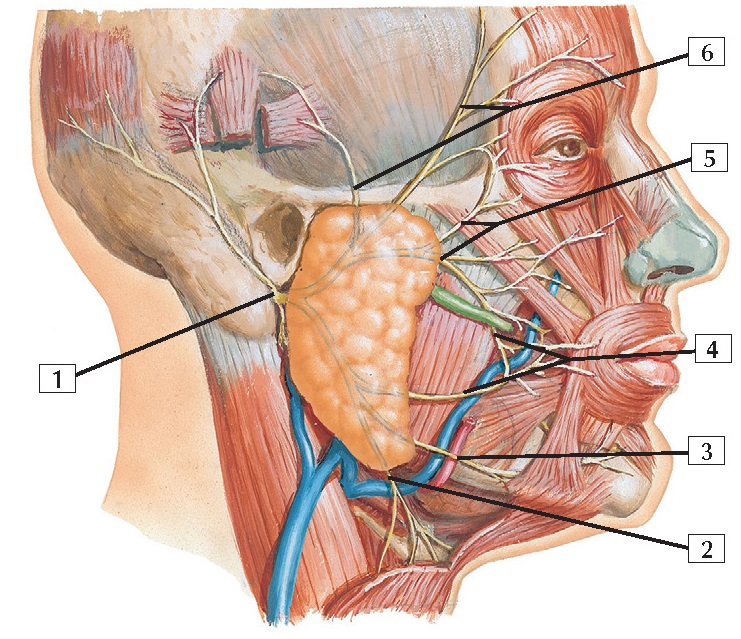Facial Nerve Branches Anatomy
1. Main trunk of facial nerve emerging from
stylomastoid foramen
2. Cervical branch
3. Marginal mandibular branch
4. Buccal branches
5. Zygomatic branches
6. Temporal branches
Comment: The main trunk of the facial nerve exits through
the stylomastoid foramen and, after giving off several small branches, courses
through the substance of the parotid gland. It ends as a plexus of 5 major
terminal branches that innervate the muscles of facial expression.
The 5 groups of terminal branches are
the temporal, zygomatic, buccal, marginal mandibular, and cervical branches. A
mnemonic— To Zanzibar By Motor Car (named from superior to inferior)—might help in remembering the names of these 5 terminal
branches.
Clinical: An infection, usually caused by the herpes simplex virus, of the facial nerve (CN VII) can cause acute
unilateral paralysis of the muscles of facial expression, a condition called
Bell’s palsy. Facial expression on the affected side is minimal. For example,
it is difficult to smile or bare one’s teeth; the mouth is drawn to the
unaffected (contralateral) side; and the person cannot wink, close the eyelid,
or wrinkle the forehead on the affected side. Often, over time, the symptoms
will disappear, but this may take weeks or months to
occur.





